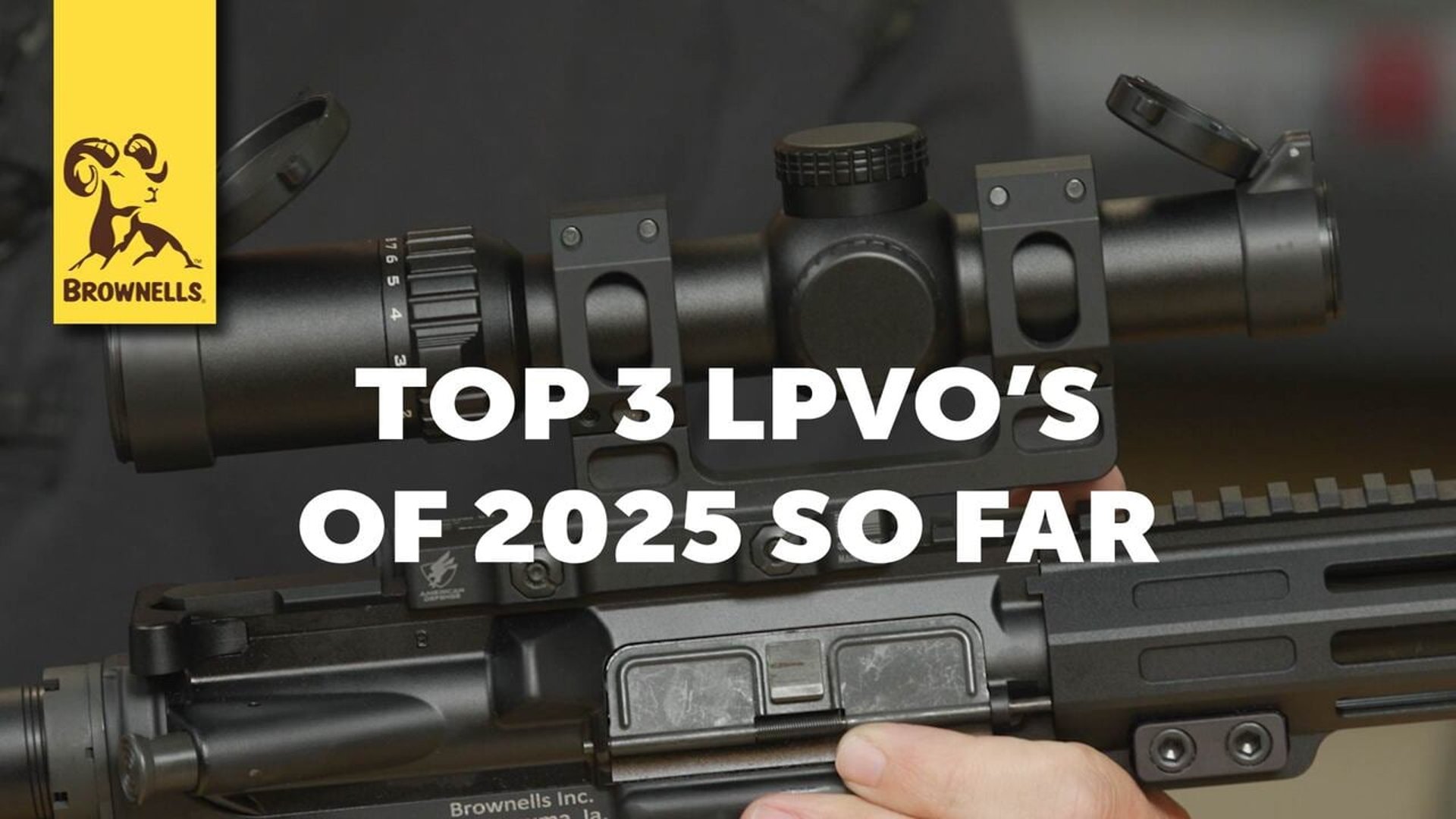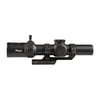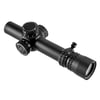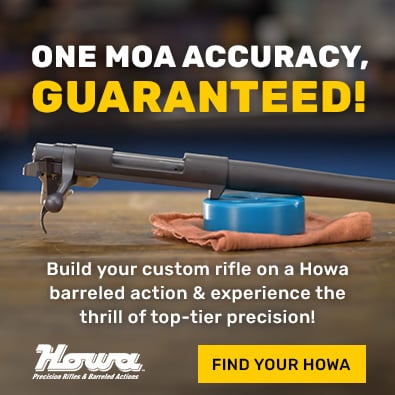Top 3 LPVO's of 2025 So Far
Synopsis
Steve and Caleb from Brownells return with another gear-focused discussion, this time spotlighting their top three picks for Low Power Variable Optics (LPVOs) in 2025. They break it down across three price categories: budget, mid-range, and high-end. Whether you're looking for your first LPVO or upgrading to premium glass, there’s something for everyone in this lineup.
What You Will Learn
Viewers will learn how three top LPVOs (Low Power Variable Optics) stack up across budget, mid-range, and high-end categories. Caleb and Steve break down the key features, performance expectations, and use cases for each optic—helping shooters understand which scope best fits their needs and budget.
Benefit
The benefit to watching is getting a clear, side-by-side comparison of top LPVOs across three price points—helping you make an informed choice based on your budget and shooting needs. You'll learn what features matter, how each optic performs in real-world scenarios, and which scope offers the best value for your style of shooting—saving you time, money, and potential buyer’s regret.
Budget Pick: Athlon Argos BTR Gen 2
Starting in the budget category, Caleb introduces the Athlon Argos BTR Gen 2, mounted on the rifle from their previous affordable AR build series. Despite being on the lower end of the price spectrum, the Athlon performs better than expected. It features a second focal plane design, which means the BDC reticle is only accurate at full magnification.
The version shown has a BTR-style reticle with a partial horseshoe and Christmas tree-style aiming points. While not ideal for dialing in across multiple magnification levels, it works well when left on 8x. For most users, this scope is a solid performer within 300 yards, though Caleb mentions being able to consistently hit targets at 500 yards with it.
It includes an illuminated reticle, durable construction, and tactile half-MOA clicks for easy adjustments. With a 30 mm tube and 1-8x magnification, it is a great value optic for newer shooters or anyone wanting to get into LPVOs without spending a lot.
Athlon Performance and Use Case
Steve and Caleb note that most shooters using this optic will likely operate within 100 to 300 yards, making the Athlon Argos more than adequate for realistic applications. Its simplicity makes it a “set it and forget it” solution. It offers basic features like illumination and clear tactile adjustments, though it uses half-MOA clicks instead of the more common quarter-MOA.
Despite its modest feature set, the Argos BTR Gen 2 remains one of the best entry-level LPVOs available today. It’s ideal for defensive training, range work, and recreational shooting.
Mid-Range Pick: Sig Sauer Tango MSR 1-10x
Moving up to the mid-range, the team showcases the Sig Sauer Tango MSR 1-10x. Unlike the other optics in the lineup, this one includes a mount, adding additional value. It features a larger 34 mm tube and a first focal plane design, making it highly versatile.
This scope has an illuminated reticle and is finished in a bronze color, which gives it a unique appearance. The 1-10x range provides more magnification than most LPVOs in its price range, making it an excellent choice for shooters who need extended capability without moving into high-end pricing.
The reticle has a half-horseshoe design and is easy to use at one power, appearing almost like a red dot. Once zoomed in, the full BDC and reticle markings become visible and useful for distance shooting.
Tango MSR Features and FFP Advantages
Being a first focal plane scope, the Tango MSR offers consistent subtensions across all magnification levels. This is ideal for shooters who rely on holdovers and quick adjustments. The clarity and functionality make it a strong performer at extended distances like 500 yards and beyond.
Caleb praises its performance, noting it hits targets reliably at longer ranges. Sig's optics have improved significantly in recent years, and the Tango MSR is a great example of value meeting performance.
High-End Pick: Nightforce NX8 1-8x
Topping off the list is the premium option, the Nightforce NX8 1-8x24 F1. Caleb calls it his favorite optic of the year. Known for its legendary durability and optical clarity, the NX8 stands out in every category. He mentions using this same series on his 6.5 Creedmoor precision rifle and loves its performance.
The NX8 is a first focal plane scope with an illuminated reticle, offering red dot-like simplicity on 1x and detailed BDC information at higher magnification. It has a 30 mm tube and compact dimensions, although it is relatively heavy for its size. That weight comes from its rugged construction, which is standard for Nightforce.
Real-World Performance with NX8
Caleb describes real-world use with the NX8, including hitting steel targets at 500 yards using 55 grain FMJ through a BRN-4 upper with a 14.5-inch barrel. Using a 36-yard zero, he finds 2.12 MRAD to be the hold at 500 yards. This kind of field data underscores how well the optic performs when properly understood and configured.
He also points out that while some online reviews were critical of the NX8, his personal experience has been overwhelmingly positive. It has proven reliable, consistent, and incredibly tough in both range and field conditions.
Zero and Long-Range Precision
The combination of compact size, MRAD-based reticle, and trusted build quality makes the NX8 one of the most capable LPVOs currently available. Caleb plans to use it in events like Gunfighter Gauntlet, highlighting its ability to perform across dynamic shooting scenarios.
With a flat dark earth finish and availability in black, the NX8 delivers top-tier performance in a refined, professional package.
Final Thoughts and Viewer Feedback
Caleb and Steve wrap up the episode by encouraging viewers to comment with their own top picks for LPVOs. Whether you agree or disagree with their selections, they welcome feedback and suggestions. From the budget-friendly Athlon to the mid-range Sig Tango MSR and the high-end Nightforce NX8, this list offers a well-rounded view of the best LPVOs for 2025 so far.
Thanks for watching, and stay tuned for more gear reviews and field-tested recommendations.











